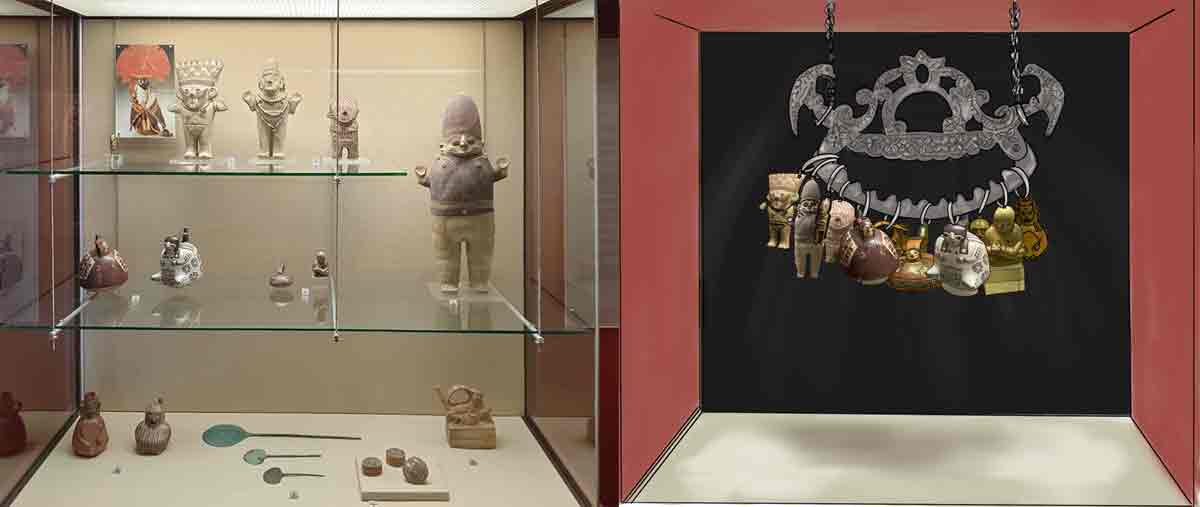Intervention by Natalia Iraci Sareri
The assignment to the display "Women" was not difficult, because Balangandãs were created by black oppressed women, for black oppressed women. Without their oppressor knowing the meaning of the so-called 'pencas de balangandãs', they were adorned with them and the women found in them a spark of hope. They represent the strength of these women and should be appreciated for this in the showcase 'women'.

However, I felt that this object lacked a connection to the objects already in the showcase. Neither in terms of design nor historically could I find any points of intersection. My concern was that each object would not be appreciated in its importance. Through a suggestion, I obtained a suitable concept for the creative response to the problem. Since the pendants of the Balangandãs, which hang on the chain, the so-called 'nave', carry an individual meaning, and this can vary from chain to chain, I saw the possibility in designing the individual objects as pendants and thus appreciating them in his individuality. Suddenly, all the objects are in harmony for me. Because even the balangandãs, especially the 'nave', does not lose its original meaning.
The sound and movement of the balangandãs also have a special place in the design. Usually balangandãs were worn on the belt of the women to protect important parts of the women's body. Quite especially, therefore, the pendants jingled with each other while walking, so that it was hard to miss hearing them.
Balangandãs - Interpretation by Natalia Iraci Sareri: Link
Balangandãs - Interpretation by Lis Haddad: Link
How Balangandãs can be taught in German schools: Link
